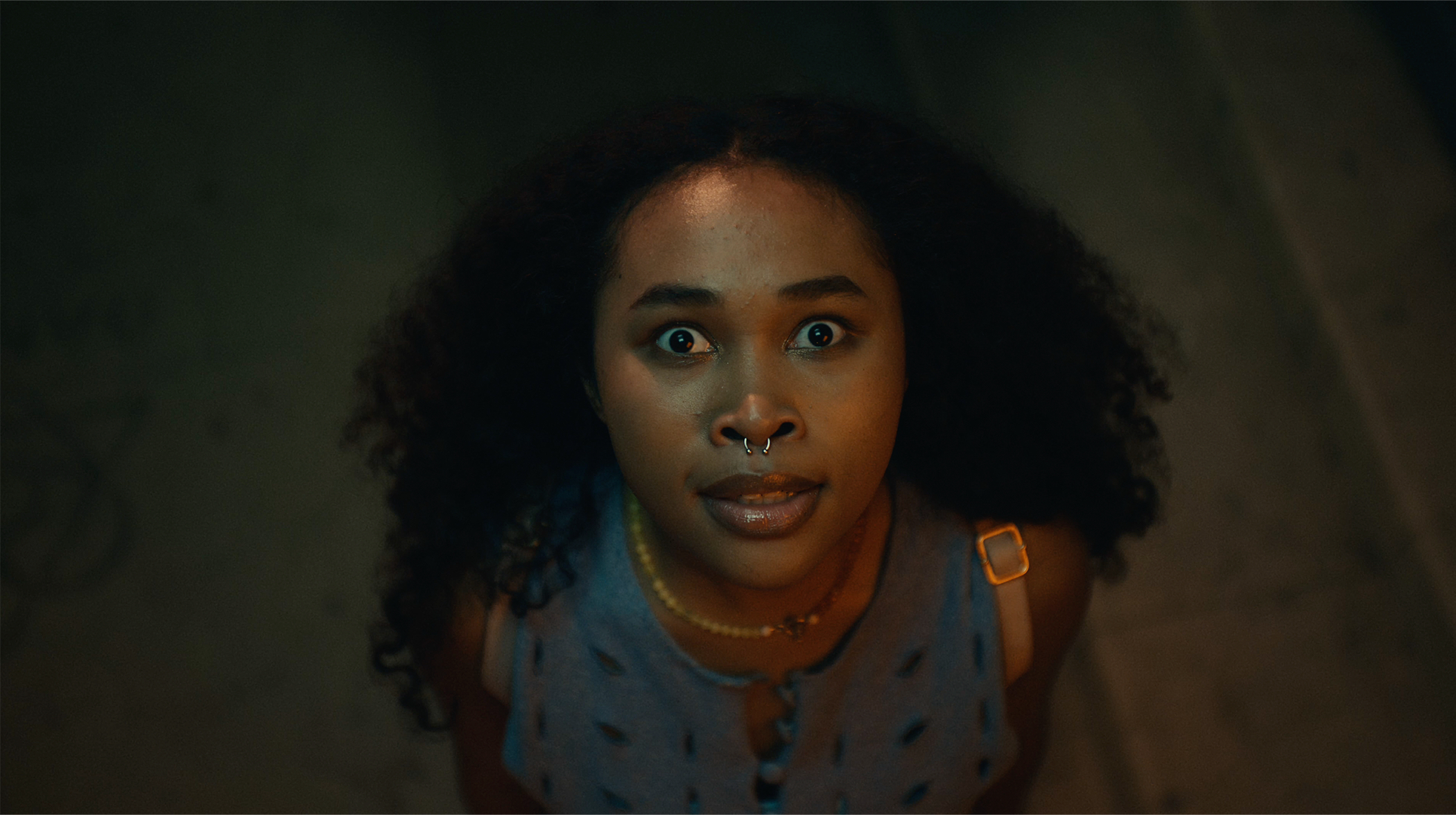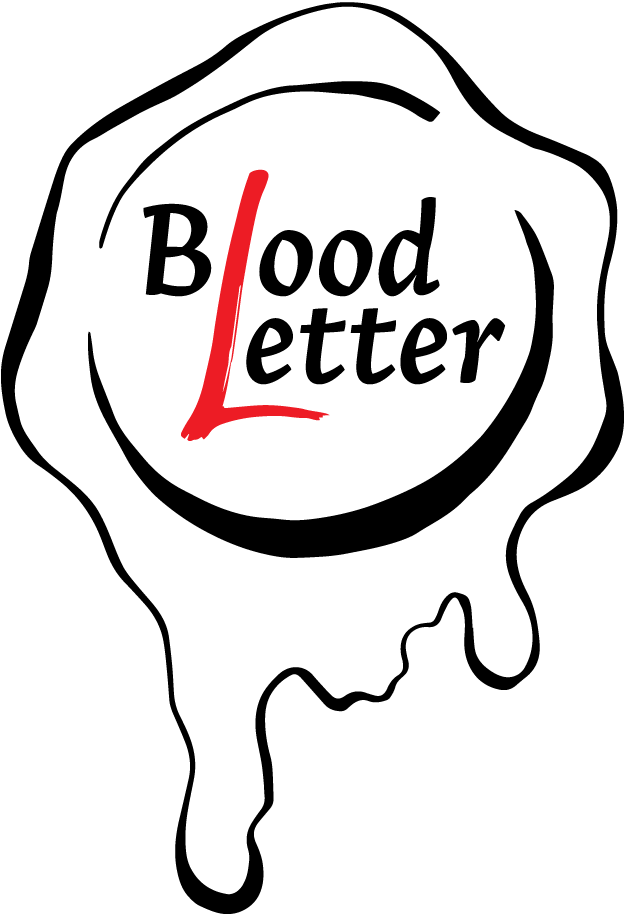EVIL, I
dir. Vanessa Beletic

In any time of great transition, I enter something of a return to childhood. I find myself living back in someone’s mother’s home: going on long walks with hot coffee as the leaves turn, or as the neighbors train dog after dog in the front yard. Tied to this state is an intense desire for answers. I want there to be a plan, one with succinct steps that I can carry out until I reach the end and I have successfully made something.
*
Two months into another round of this mode of being, twenty-eight and in a new neighborhood where I am still learning the fastest route to walk to the gas station for coffee in the morning, I watch Vanessa Beletic’s short film “Evil, I”. The film follows a Haitian teenager (Faith Archer) with slight acne and scared eyes in the aftermath of a classmate’s accident (Yindra Zayas)—one that she believes she has caused with her newfound powers. In a horror-tinged homage to a coming-of-age tale, she is looking for an adult to tell her if she is innately evil.
The film opens with a mural. The girl walks past the larger-than-life painting on the side of a building in her city. We do not see all of it, instead, the framing holds us so that we only see the mural’s figures from the waist down. These expansive legs loom up the side of the building: jeans and white lab coats, work-reddened hands. Each stitch on the jeans is a brush laid to the wall by a still hand.
*
A mural moves away from the hands. It takes the intimate drawing and pushes it to such an extreme that it often takes many people and no end of tools to complete.
Years ago, C and I sat in the back of Document Coffee in LA’s Koreatown and watched a mural go up on the side of a building half a mile away. An ad for a phone company, the image of a hand holding a phone, its giant thumb waking up the screen. The image scaled for the height of the building, bubbling out to as large as it needed to be to fill the frame. We watched it far above our heads, like watching the clouds not to make a shape of them but because they are making shapes of themselves. About seven small bodies moving on scaffolding to plaster the mural one piece at a time.
We had both been living in new cities for about a year. It was unclear whether the transition period had officially ended, or if we were still feeling it only in more subtle ways. I was in a new relationship, we both had new jobs, new couches. It felt itchy having her visit, having to present all of my newness like I was sure of it. The mural covered the sky and I found myself promising her I would move to her city when I was done with mine, or that together we would try a new place. It wasn’t a lie; it was the answer I needed to keep from feeling like I had to be making the right moves. Those would come in the future. For now I could retain a childish unsureness about all of the choices I had had to make so fast and overlapping.
Years before that, when I lived in Chicago, I would drive past a mural every day on my way home from work. At least once a month it got painted over, made new. The passage of time could be marked in the fluctuations of this concrete wall. It was never redone in a single day, and so there would be a period of time where it was only partly painted over. Always from the bottom up, the future rising to consume the past. An accidental exquisite corpse.
Watching one mural climb up to gut another denies, in a way, the reality murals attempt to create: something larger than life existing simply and easily in the middle of all this.
*
“Evil, I”’s opening mural does what they all do: makes the world into its frame: the exposed innards of fire escapes, grubby city benches, pale blue sky. And the girl inserts herself into that frame, making the figures something of a horror as they become suddenly huge and monstrous. Her head bouncing along at the level of their knees.
Their bodies suddenly so large, as some bodies are, and hers suddenly so small, as proof that there is an order to things.
A mural is its own god. Muraled bodies seem like a promise.
The girl is looking for answers.
*
At Document Coffee there was an art exhibit hanging on the wall opposite the baristas. A wide grid of photos, each of a regular at the coffee shop, each asked to bring in what they would grab to save if their home caught fire. Portrait after portrait of these shop regulars and their paint sets or tea sets, their dogs, cats, grandfather’s jewelry, great aunt’s porcelain. And in each photo, their hands. Hands gripping a thing they can’t live without.
The hands in “Evil, I”’s mural are large and peachy shadowed. Certainly understood as capable. Holding nothing. Cupped loosely in the air above the girl’s head. Her own hands, clean, even as she begins to cause destruction in the bodies of her peers. Her hands remain sweaty and worrying at her backpack straps until an older woman holds them.
*
It has been about a decade since I went to church for a mass, about five years since I regularly stepped foot inside of one. There was a period in between when I found myself ducking into them in the middle of the day or odd hours at night, sitting on hard pews that helped me feel less far away from home. The place where you grew up is an answer.
In a hand-me-down red felt coat I sat through cold Chicago nights on the mosaic tiled floor of a church’s vestibule, rubbing fingers over the rough grout. The tiles had been laid by hand, each of them only the size of a thumbnail and crowded together to create the clunky images of fruits and branches to be stepped on as people entered the building.
I am saying that I understand walking into a church no matter what is being shouted about inside. Churches are often hand-made.
The Haitian church the girl in the film ducks into has hand-painted crosses on either side of the door. Hand-painted book and praying hands. Hand-painted DEUT18:10. Sunday School 9:30am. Worship Service 11:00am. Wednesday Healing 6:30pm. She goes into the church like it will have answers.
I have always conflated answers with safety.
Inside the girl’s church is a painting of a white Mary and baby Jesus—Madonna and Child. Pink-cheeked, cherubic as usual. This painting, too, even in its infinite reproductions, beginning with a hand. An image created by a person.
The painting is important because it is in the film’s frame. The frame holds on it, caresses it.
For stretches of the film, the frame holds endlessly on the girl’s face.
In the church, the girl sits next to a woman who plays with the evil eye necklace at her throat. In the frame: her fingers, toying at the metal. To finger a necklace: to blame it, to pleasure it. She pulls her hand away from the necklace only to pass the girl a note.
The evil eye is a frame. A curse is a frame. The girl’s seeking is, itself, a frame. Inside it Jesus’s face melts into grimace, language is a paranoid sky.
Madonna and Child is a cleanly framed relationship. Even in its language—the child is exactly that. The child is understood as child. We know the child to be Jesus, and how tongue-in-so-many-cheeks to just call him the child. His personhood makes things complicated, begs questions. To call him the child is an answer.
*
The frame holds.
Each time I move, each transition, its own brief and bright new youth. The new life exquisite-corpsed with the last: the move allows old mannerisms to peel away, makes me embarrassed I had them in the first place. I am trying not to fake an answer this time. To live, instead, through every night of staring at the ceiling until the pillow warms enough I have to shift positions. To not have an answer, but to have time.
On the outside of the church all the numbers are painted by hand. There is something unbelievably innocent and sinister about hand-drawn numbers.
“Evil, I” knows the horror of human construction. How something can turn from wholesome to horrific on a dime, the aesthetic of being made by hand is one that belongs to children in the same way waking you in the dead of night with loose screams belongs to children. There is an innate humanity that children are allowed, one explicitly tied to the horror of being conscious in a human body.
Holding something human-made is precious, and horrible — we have rendered these things. We have made them.
*
The girl does not find an answer, and yet the film ends on the kind of optimistic note that horror as a genre specializes in. Dark street. A bloody smile in the night. She makes an answer.
Mo Fowler is a maker at Big Table Press and the author of the chapbook Sit Wild. Their writing is forthcoming in The Minnesota Review and The Hopkins Review, and can be found in Seventh Wave Magazine, Bloodletter Magazine, Garland, Snaggletooth Magazine, and elsewhere,
